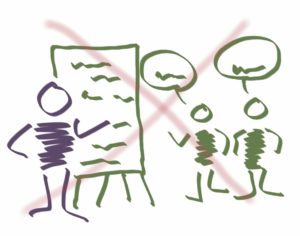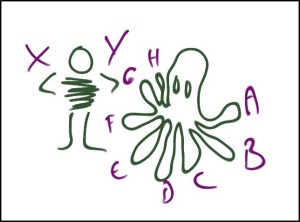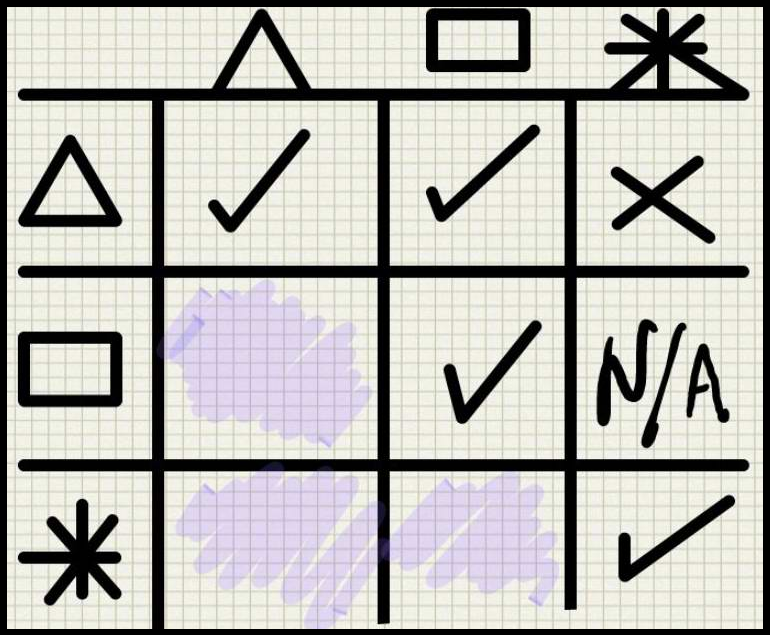Serendipity means a “fortunate happenstance” or “pleasant surprise” to most of us though we tend to think of it as an accidental discovery. The term serendipity was coined by Horatio (Horace) Walpole in 1754, in a letter he wrote to a friend. Walpole explained an unexpected discovery he had made by referring to a Persian fairy tale, The Three Princes of Serendip. In this fairy tale the princes, were “always making discoveries, by accidents and sagacity, of things which they were not in quest of”. (Wikipedia Serendipity)
Serendipity in the work place does it exist and how does it work?
So can the work place be a site for serendipity? The short answer is Yes. The reasons for its existence being difficult to experience or notice is that we work in a very focused and closed way, efficiency is god and there is little to no time to waste. The powers that be, demand visible work, results or at least to be seen making an effort in work so balance sheets can be filled and justified. Rather hectic really and ultimately a treadmill, rat race scenario. Ever wonder why big companies buy small ones. These small, startups etc. seem to always develop something better or new, while larger companies, to evolve, purchase and absorb. How do these small entities do it?
Well I suggest serendipity has something to do with it and the efficiency model we all follow to a varying degree.
Let’s look at a typical and basic profile of a small entity like a startup. Everyone knows everyone else, with only such a small group of people involved there are tight interactions between all the members. They often work long hours together focused on a common goal. This sounds like the efficiency model in larger companies, but it’s not. The common focus seen in small groups is more like gathering around a fire in a tribal community, exchanging stories and listening not only to the information but also the people giving the information. Watching body language, subtle tones in speech, facial expressions, eye contact between participants and much more, all the things we do without even noticing in our day to day lives with friends and family. The exchange of information and ideas gives a sense of the personal dynamics of the group, breathing together. This is not how large companies work, they are efficiently sterile, cold, meeting and agenda biased. In fact the opposite is often the end result. Instead of serendipity we get bahramdipity. Bahramdipity describes the suppression of serendipitous discoveries or research results by powerful individuals.
Serendipity, like all good things takes time, it even seems like a waste of time that could be used becoming more efficient in a particular task etc. As discussed previously in Efficiency may be a poisoned pill waiting to be swallowed? If we focus solely on increasing efficiency of one part we can often cause the whole to become less efficient. In the work place we keep our heads down and work hard, or at least appear to. The truth is that most work is not actually what we would measure as being work. Work is the final result of effort, often a physical embodiment of all that time. Yet the actual bulk of effort is not seen in the end result, all the thinking, planning, co-ordinating and inspiration is nowhere to be seen so we often ignore or even pretend to be actively working rather than be seen as passively working.
So are we all slack and only working about 20% of the time we’re at work? Well, yes and no. Consider a very difficult Sudoku puzzle or similar task, there is usually a burst of activity in the beginning, as we accomplish the easier parts of the problem. I call this the low fruit, because they are easy to pick. Then there’s a jump in the effort needed to accomplish some of the remaining tasks, until you hit what seems to be an impasse. Here the natural instinct is to keep hammering at the issue, we don’t want to fail because evolutionarily speaking, failure means death. We start going over the issue again and again in our minds, becoming more focused, more frantic and ultimately completely paralysed and inefficient. I call this looping which in itself can become the problem because we lose the relative scale of the problem. The result is that once you start looping and the more iterations you do, the bigger and more insurmountable the problem seems to become, it grows and grows.
Now consider a piece of personal philosophy, looping is when you go over something in your head more than 3 times, this is when you start to loop, STOP ! At this stage any insight should have shown up or it is not ready to be found by you yet, the only thing you will accomplish is to make the problem seem much larger than it is, much like bad news reported repeatedly.
Back to the Sudoku game, often if you walk away from it or distract yourself, part of the solution will seem to jump out at you from your peripheral mind, note I say mind not consciousness because it could be inspired by your subconscious. So what does this have to do with serendipity; well you need to allow space and to let your mind breathe. Music is not just notes it’s the space between them as well.
I propose that serendipity does exist in the work place, if you are willing to let it breathe, don’t rush around doing busy work (acting busy so you look like you’re working hard), take a break when looping and interact with others or just observe your environment. Next time have a coffee with someone, talk not only about work but other things and also listen.
Most of us nowadays are so heavily into virtual social networks, we forget the real social network, community. We also have a tendency, to treat social networking as an expedient and rapid way for us to climb the corporate ladder, this means our focus is almost always on ourselves and looking upwards, a ‘what’s in it for me?’ mentality.
Is this a one-way street?
Of course not, serendipity can not be focused, planned or made to happen by its very nature is unexpected almost random. The nature of serendipity is you don’t know when and in which direction it will come from, so if you are focused only on moving yourself up the corporate ladder, then you’ve already reduced your chances of a serendipity lightning strike. Often the key is to step back, distancing your self-interests and looking at the pieces to see which bits go together. You may see an obvious connection between staff or projects from different disciplines and/or silos.
The structure of serendipity
Innovations presented as examples of serendipity have an important characteristic: they were made by individuals able to “see bridges where others saw holes” and connect events creatively, based on the perception of a significant link.
The chance is an event, serendipity a capacity. The Nobel Prize laureate Paul Flory suggests that significant inventions are not mere accidents.
…… LET IT BREATHE !! …….. LET IT BREATHE !!…….
Serendipity – wikipedia
Bahramdipity is derived directly from Bahram Gur as characterized in the The Three Princes of Serendip. It describes the suppression of serendipitous discoveries or research results by powerful individuals.
The_Three_Princes_of_Serendip – wikipedia






